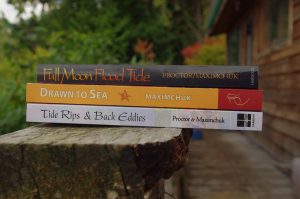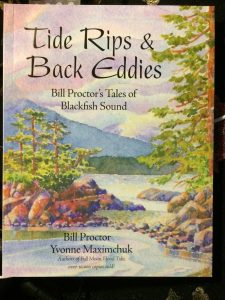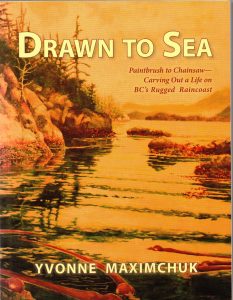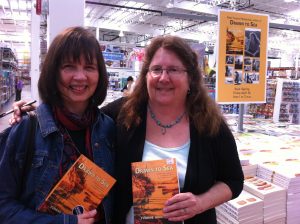After fifty plus years of at least semi-conscious introspection I conclude I am somewhat disorganized. I no longer fight this, but accept it as an essential element of my creative being. A certain amount of order is necessary to actually pull a concept into tangible manifestation; however this does not begin in a writer’s room.
The first writer’s room is in my mind, independence from distracting stimuli the only requirement. Because I live in wilderness and consequently am extremely sound sensitive, earplugs are sometimes needed for this writer’s room.
 Luckily the creative force is powerful and absorbing. Mrs. Ferguson, my grade five teacher, called it ‘daydreaming’ and encouraged me to write down the beautiful thoughts and word strings so I could weave them together into a larger narrative. Hence a pen and notebook are also needed in my writer’s room.
Luckily the creative force is powerful and absorbing. Mrs. Ferguson, my grade five teacher, called it ‘daydreaming’ and encouraged me to write down the beautiful thoughts and word strings so I could weave them together into a larger narrative. Hence a pen and notebook are also needed in my writer’s room.
Often a writer, including me, takes years to birth a book from a stew of incomplete ideas so, at a certain time, a physical space becomes important. I must be comfortable to write; good back support, padded arm rests, feet at the right height from the floor. In my writer’s room a black ‘wheelie chair’ has pride of place. My neighbor built a cedar picnic table for me, which I painted white and is now stained with layers of paint splashes. The half of it dedicated to writing is stacked with piles of notes relevant to several projects.
When I raise my eyes from the computer, one window reveals the camellia, clematis and Japanese maple tree – color for all seasons and a rest from the screen. The other window shows ever-changing sky, distant islands and closer conifers. Both views allow me contemplation space and eye relaxation. Windows are essential for my writer’s room.
On a shelf below the window sits a CD player/radio. Often my daughter Theda’s inspirational music plays. Nearby, a bookshelf rich with the beauty and meaning of the ages; dictionary and thesaurus, books about root words, the writer’s art and artist’s rights, books of other authors’ journeys of discovery and on every aspect of my favorite topic, the coastal world I inhabit.
My writer’s room is my artist’s studio, which embraced its dual role around 2000. It was a comfortable transition as my writing habits are the same as my painting habits… notice, contemplate, imagine, notate, gather, assemble, sit in one place often enough to shape something new and interesting. I love my writer’s rooms.
Paula’s note: Yvonne Maximchuk is an artist and author of three books including a  memoir of her wilderness life in the Broughton Archipelago, Drawn to Sea – From Paintbrush to Chainsaw, Carving out a Life on BC’s Rugged Raincoast. Yvonne and the legendary Billy Proctor are touring Vancouver Island with their new publication Tide Rips and Back Eddies, Bill Proctor’s Tales of Blackfish Sound. Dates and venues can be found at www.yvonnemaximchuk.com.
memoir of her wilderness life in the Broughton Archipelago, Drawn to Sea – From Paintbrush to Chainsaw, Carving out a Life on BC’s Rugged Raincoast. Yvonne and the legendary Billy Proctor are touring Vancouver Island with their new publication Tide Rips and Back Eddies, Bill Proctor’s Tales of Blackfish Sound. Dates and venues can be found at www.yvonnemaximchuk.com.



